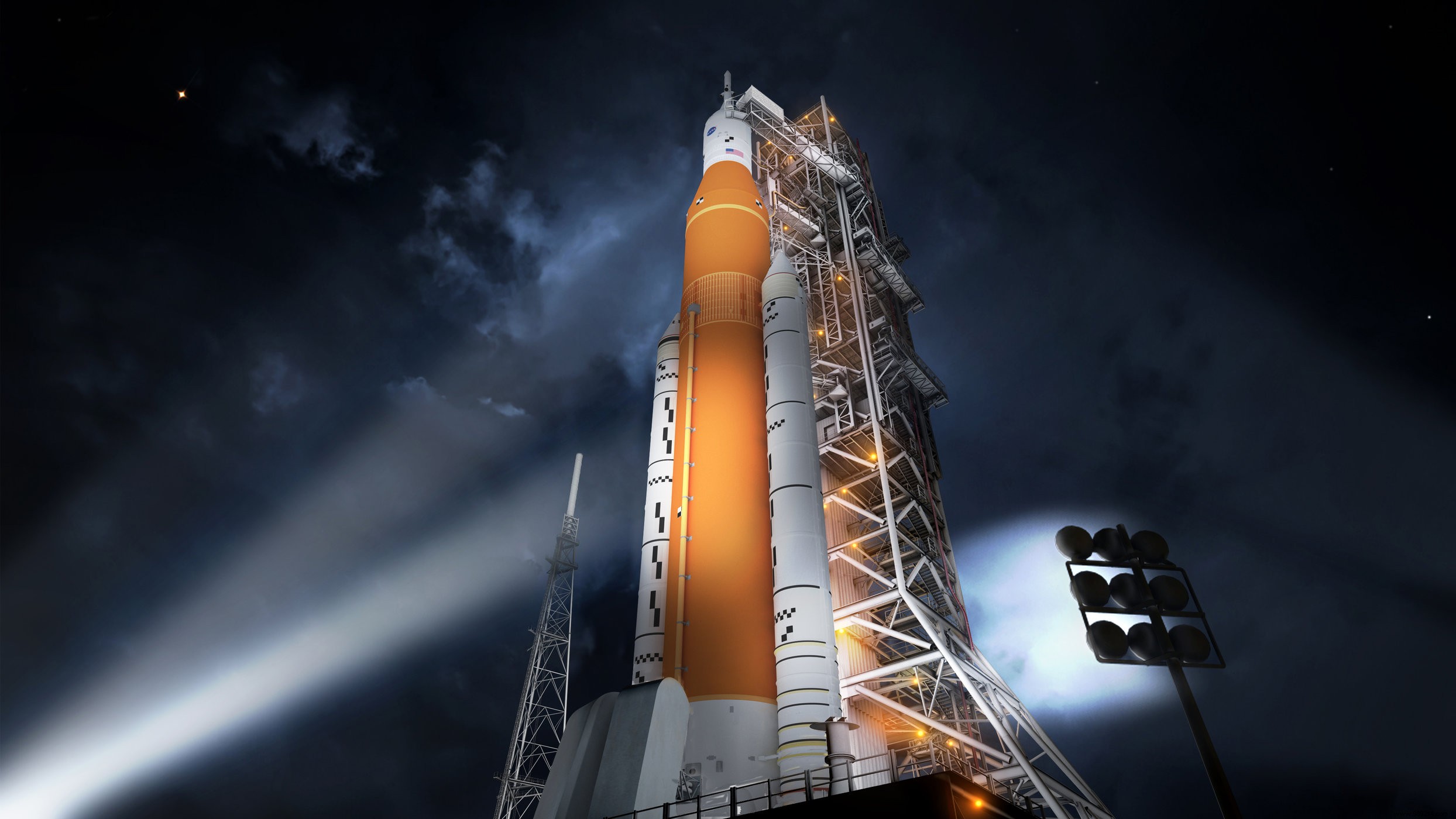The first stage of the Space Launch System (SLS), responsible for returning humans to the Moon, has just successfully passed a seventh and penultimate test. Further tests are also planned with the upper stage of this huge rocket over the next few months. Goal:to be ready for November 2021.
The SLS is a super-heavy launcher developed by NASA since 2011. It is he who will be responsible for sending crews to the Moon, and why not later to Mars. Its first flight is scheduled for November 2021, as part of the Artemis I mission, the objective of which will be to send an unmanned Orion capsule around the Moon. Next will be the Artemis II and Artemis III missions. The first will be a manned mission in orbit around the Moon, while the second will take astronauts to land on the lunar surface.
That said, where are NASA and Boeing (the main contractor of the SLS) in the development of this rocket?
The first eight minutes of each Artemis mission will be driven by the first floor of the SLS. For several months, NASA has therefore been testing this 64-meter-tall booster - the tallest ever developed by the agency - as part of its "Green Run" program at the Stennis Space Center, near Bay St. Louis, in the Mississippi. These tests (eight in total) are increasing, so as to ensure that everything works perfectly for the big day.
A few days ago, NASA and Boeing engineers added cryogenic thrusters to the first stage of the SLS for the purpose of operating a "wet dress rehearsal" test. », the seventh of his « Green Run Programm ». During it, the thrusters were filled with liquid hydrogen and liquid oxygen cooled to ultra-low temperatures. The engineers then checked the fuel filling phase, then the thrusters were successfully drained.
NASA can therefore now consider its eighth and final test, during which the SLS's four RS-25 engines (upgraded versions of the US Space Shuttle's SSME engines) will be ignited for more than eight minutes. This one should be a lot more exciting than loading thrusters. Indeed, we can't wait to see this "monster" roar, even if it has to stay on the ground (at least for now).

The upper exploration stage (or second stage) of the SLS has also just passed its Critical Design Review, or CDR. In concrete terms, a panel of experts evaluated the structure to ensure that it meets the requirements of future missions. This most recent assessment has just confirmed that this stage will withstand deep space environments, ensuring the safety of astronauts along the way (still).
The review board also assessed testing processes, the industrial base's ability to supply parts and tooling, and production plans. Boeing, the prime contractor for this floor (but also the first) will manufacture and assemble it in New Orleans. It will then undergo a series of Green Run tests, like its big brother, at NASA's Stennis Space Center near Bay St. Louis, Mississippi.
We now hope that everything will go as planned, and that the Artemis I mission, which should pave the way for the return of humans to the Moon, will be launched on time.